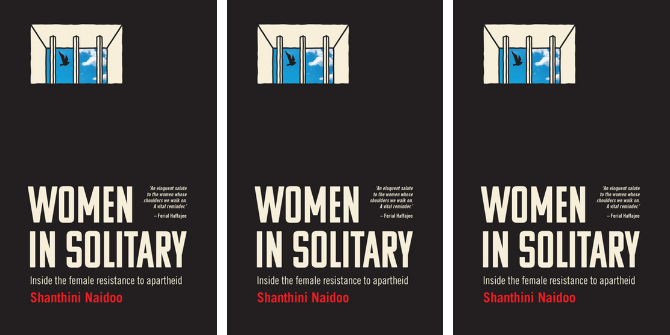With chapters covering photography, sound, video games, graffiti and performance, The Ashgate Research Companion to Media Geography represents a substantial and meaningful contribution to this new field, writes Sander Hölsgens.

This review originally appeared on LSE Review of Books.
The Ashgate Research Companion to Media Geography. Paul C. Adams, Jim Craine, and Jason Dittmer (editors). Ashgate. 2014.
The Ashgate Research Companion to Media Geography offers a relevant overview and review of current research in the interdisciplinary field. Editors Paul C. Adams, Jim Craine, and Jason Dittmer praise media geography for its propensity to challenge conventional paradigms and boundaries. In line with this argument, this companion highlights relatively new phenomena, such as space and video games, places of graffiti, and telemediated sociability, or what we know as social media.
The editors also signal an important common denominator in recent work within media geography: a turn toward the body. “In order to engage the media”, they argue, “bodies are required” (p.6). Moreover, “bodies make up much of the content of media” (ibid). This emphasis highlights the relevance of the Companion, for it opens up research questions that extend beyond the field of media geography, without disregarding the methods, agenda, and histories that have become characteristic of geography as an academic discipline.
In the first chapter, Steven Hoelscher reconsiders photography as a geographic medium that is “unparalleled in shaping perceptions of place” (p.17). Hoelscher’s essay is in particular concerned with Magnum Photos, which he portrays as the most important and influential photo agency to date. One of Magnum’s initial aims was to visually describe what a world might look like after the atrocities of the 1940s. This had political, ideological, and cultural implications, namely to “conceive a world beyond national boundaries and removed from a fascist ideology” (p.25).
In other words: Magnum made a photographic attempt to (re)discover the world around us. The photo series that have been created throughout the second half of the twentieth century, Hoelscher argues, “demonstrate the relationship between people and their environment as they shed light on other places without giving up their specificity – they create a distinct sense of that place” (p.24). In order to further develop this argument, Hoelscher discusses multiple Magnum photographers in closer detail, such as George Rodger, Martin Parr, and Bruce Davidson.
 Image credit: Looking east from 6th Avenue (c.1948); photo by William P. Gottlieb (Wikimedia, Public Domain)
Image credit: Looking east from 6th Avenue (c.1948); photo by William P. Gottlieb (Wikimedia, Public Domain)
The strength of the chapter is located here, for it offers close examinations of how photography might be perceived as a geographic medium, and what kind of knowledge is at issue. Bruce Davidson’s work is especially of interest. For Hoelscher, his photographs are not necessarily concerned with a dramatic narrative. Instead, they exhibit a progressive sense of place that “links to places beyond, all the while maintaining its distinctiveness” (p.36). At the same time, they engage with the ‘there-ness’ of photography, or the impression that we perceive the world as though without mediation. This relational and corporeal understanding of a place through a photograph is what makes the medium so valuable to media geography, and indeed to related fields of research.
In the seventeenth chapter, “Spaces of Mediated Sound”, Michael Bull explores the position of sound in the experience of the city landscape. More specifically, his research is concerned with the so-called personalised soundworlds, or the ways we alter our perception of the world by using devices like the iPod. Because of the immersive quality of these sound technologies, Bull argues, “users are able to traverse the noisy urban street, filtering out the sounds of the city and replacing them by their own private sound bubble” (p.280).
Sound technologies, then, allow the urban subject to create a city in one’s own image, and to construct a personalised sonic landscape. Bull supports the latter argument by referring to his ethnographic fieldwork, through which the position of sound in the privatization of public space is emphasised. Exemplary is this comment by interviewee Zuni: “I then started wearing it [the iPod] while shopping. I did it to control my environment and desensitise myself to everything around me. What I found interesting was that the more I wear my iPod, the less I want to interact with strangers. I’ve gotten to the point where I don’t make eye contact. I feel almost encased in a bubble” (p.283).
In September 2014, the iPod Classic was discontinued; the smartphone had proved to be its multifunctional and internet-driven successor. Bull refers to this technological transition on the last couple of pages, noting that smartphones are a more developed tactic of privatization – one that allows users to make and experience public spaces according to their own desires. These final comments are an open invitation to reconsider the implications of newer technologies that aren’t directly discussed in this chapter. Indeed, how does Google Glass affect the way we experience and imagine the city landscape?
Michael Bull’s chapter is emblematic of The Ashgate Research Companion to Media Geography. The editor’s endeavour to offer a review of current research on contemporary phenomena is admirable, and emphasises the relevance of media geography. It is questionable whether this companion will withstand the ravages of time on the basis of its topics; the iPod is already in some ways obsolete. In terms of methodology, arguments, and agenda, however, The Ashgate Research Companion to Media Geography is substantial and meaningful.
Sander Hölsgens is a filmmaker, and a PhD candidate at the Bartlett School of Architecture, UCL. He is also a contributing editor of Cultural Anthropology (Cultanth.org). His most recent research is an anthropological inquiry into the act of skateboarding in Seoul, South Korea. Find him on Twitter @sanderholsgens. Read more reviews by Sander.






